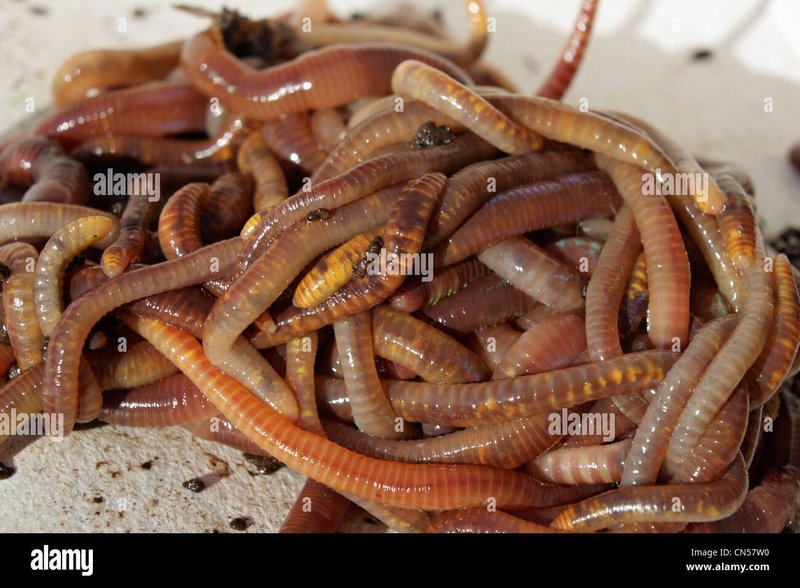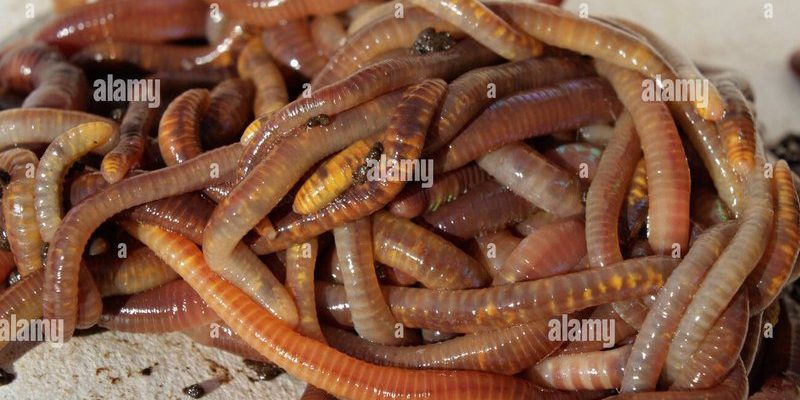
So, why should you care about the Eisenia hortensis? Imagine your garden thriving and bursting with life—lush greenery, vibrant flowers, and a bountiful harvest. This little worm can help make that happen! Let’s explore what makes this worm tick, including its habitat, benefits, and how you can cultivate a friendly relationship with it in your garden.
The Basics: What Is Eisenia Hortensis?
The Eisenia hortensis is a type of earthworm native to Europe but has become popular worldwide, especially due to its efficiency in composting and improving soil health. These worms typically grow to about 3-4 inches long and can be identified by their reddish-brown coloration and long, slender bodies. They’re a bit like the unsung heroes of the soil.
Eisenia hortensis loves to live in moist environments, often burrowing into rich, organic matter. This means you’ll usually find them in your garden or the forest’s floor, busy breaking down leaves, decaying plants, and other organic materials. Think of them as nature’s little recyclers—they’re breaking down waste and turning it into nutrient-rich soil for your plants.
You might wonder how these worms differ from others. While there are many types of earthworms, Eisenia hortensis is particularly known for its high reproduction rate and ability to thrive in compost piles. They’re often preferred in vermiculture due to their active nature and efficient composting skills.
Habitat and Diet
Eisenia hortensis thrives in a variety of habitats, but it’s most comfortable in soil that’s rich in organic material. This could be your backyard garden, a compost heap, or even forested areas. They prefer environments that are moist but also well-aerated, which helps them breathe and move around easily.
Speaking of diet, these worms are not picky eaters. They mainly consume decaying organic matter, such as leaves, plant debris, and kitchen scraps. As they digest this material, they excrete nutrient-rich castings, which act as a natural fertilizer for plants. You could say they turn waste into gold!
If you’re thinking about starting a compost pile, including Eisenia hortensis in your setup can significantly boost the decomposition process. They help break down materials faster, which means you can have rich compost ready for your plants in no time.
The Benefits of Eisenia Hortensis
So, why should you introduce Eisenia hortensis into your garden or compost system? The benefits are numerous and impressive:
- Soil Aeration: These worms create tunnels in the soil, allowing air and water to reach plant roots more effectively. This helps improve drainage and prevents soil compaction.
- Nutrient Recycling: As Eisenia hortensis breaks down organic materials, they release nutrients back into the soil, making them available for plants. It’s a natural way to fertilize without chemicals.
- Increased Microbial Activity: Worm castings promote healthy microbial life in the soil, which is essential for plant growth. More microbes mean more decomposition and nutrient availability.
- Eco-Friendly Pest Control: A healthy worm population can help deter unwanted pests, as they create a balanced ecosystem that’s less favorable for some harmful insects.
Integrating these worms into your gardening practices isn’t just beneficial for your plants; it also promotes sustainable practices that can help the environment.
How to Cultivate Eisenia Hortensis
If you’re ready to welcome Eisenia hortensis into your gardening routine, here’s how to get started:
1. Choose the Right Location: Find a spot that’s shaded and moist, as these worms prefer cooler environments. If you’re using them for composting, a compost bin or pile is ideal.
2. Prepare the Environment: Create a nutritious habitat for your worms. You can do this by adding organic materials like fruit and vegetable scraps, coffee grounds, and shredded newspaper.
3. Introduce the Worms: You can buy Eisenia hortensis from gardening stores or online. Start by adding about 1,000 worms for a standard compost bin.
4. Maintain Moisture Levels: Regularly check the moisture in your compost heap. It should feel like a damp sponge—not soaking wet. If it’s too dry, sprinkle some water to keep things moist.
5. Feed Sparingly: It’s essential to feed your worms in moderation. Too much food can lead to odors and pests, so aim to add smaller amounts every week.
By following these steps, you can create a thriving environment for Eisenia hortensis, ultimately enriching your garden and compost system.
Common Issues and Troubleshooting
Even with the best intentions, you might run into some challenges while working with Eisenia hortensis. Here are a few common problems and how to solve them:
– Dry Soil: If your worms start to escape, it might be a sign that your environment is too dry. Check moisture levels and add water if needed.
– Overfeeding: If you notice unpleasant odors or pests, you could be overfeeding your worms. Cut back on the food and allow them to catch up.
– Too Much Heat: Some gardeners overlook temperature. Eisenia hortensis thrives in cooler conditions, so keep your compost bin in a shaded area, especially during hot weather.
By staying aware of these factors, you can ensure a happy and productive worm population.
Eisenia hortensis might not be the first thing you think about when it comes to gardening, but they play a crucial role in creating healthy and vibrant soil. From improving nutrient availability to aerating the ground, these worms are nature’s little helpers.
Whether you’re a seasoned gardener or just starting out, considering the inclusion of Eisenia hortensis can greatly enhance your gardening experience. So, next time you’re working in your garden or setting up a compost bin, remember the benefits of these incredible earthworms. They’re not just little squiggly things in the dirt—they’re essential partners in your green journey!

